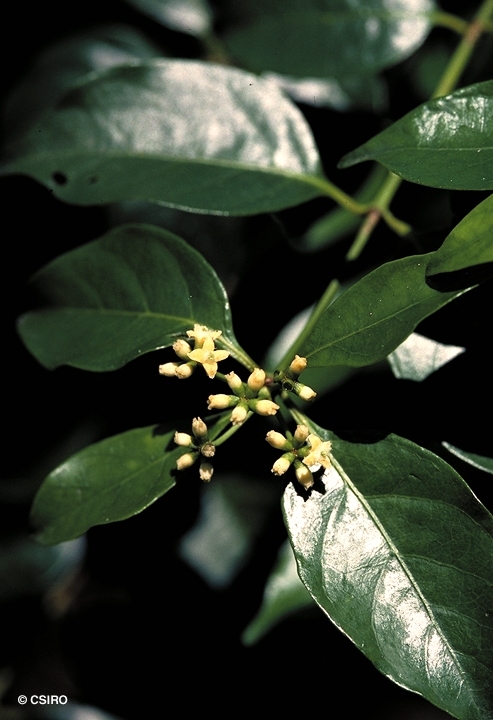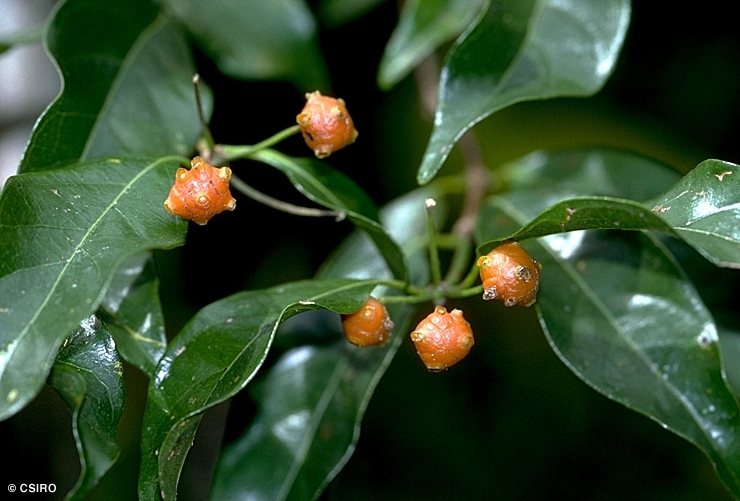Australian Tropical Rainforest Plants - Online edition
Gynochthodes umbellata (L.) Razafim. & B.Bremer







Razafimandimbison, S.G. & Bremer, B. (2011) Adansonia 33(2): 296.
Vomit Vine
Leaf blades about 3-7.5 x 1-3.8 cm, petioles about 0.4-0.8 cm long. Lateral veins about 5-7 on each side of the midrib. Domatia are foveoles with hairs present in the orifice or tufts of hair in a hollow. Stipules about 5-7 mm long, sticky or varnished, cohering and forming a sheath around the twigs.
Inflorescence consists of several umbellate heads each on a long peduncle. Flowers white turning cream following anthesis, about 6-7 mm diam. Hypanthium about 0.6-1 mm long. Calyx tube cupular, about 1.3 mm long, lobes absent. Corolla tube about 2-2.2 mm long, mostly glabrous inside except for the throat. Corolla lobes about 2.2-3 mm long, densely hairy on the inner surface. Staminal filaments about 0.41 mm long, attached at the top of the corolla tube. Style short, about 1-3 mm high. Stigmas 2, +/- sessile, papillose. Ovules 2 per locule.
Infructescence (multiple fruit) orange in colour, about 8-10 mm diam. with the tubular remains of the calyces of several flowers persisting on the surface. Fresh fruits emit an odour like that of a strong cheese, e.g. gorgonzola. Seeds about 5-18 per multiple fruit, each seed about 2-5 mm long. Embryo about 1-1.1 mm long. Cotyledons about one quarter of the length of the embryo.
Cotyledons ovate, about 4.5-9 x 3.5-5 mm. First pair of true leaves ovate, clothed in scattered erect hairs on both the upper and lower surfaces. Midrib raised on the upper surface. At the tenth leaf stage: leaf blade narrowly elliptic, about 5-10 x 1-3 cm, apex acuminate, base attenuate, petiole about 0.4-.12 cm long. Midrib raised on the upper surface. Both the upper and lower leaf blade surfaces clothed in pale hairs. 'Oil dots' often elongated. Lateral veins forming loops inside the blade margin. Stipules about 3.5 mm long, completely enclosing the stem above each pair of leaves, apices recurved. Stems twining. Seed germination time 187 to 297 days.
The bark and root of this species was used in the Pacific Islands to make a yellow dye.
Morinda umbellata L., Species Plantarum 2: 176 (1753). Type: Habitat in India.





